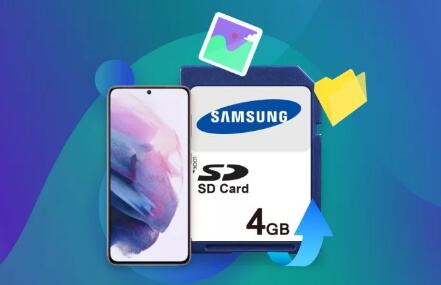Recovering data from a formatted SD card can be a daunting task, especially if you don’t know where to start. However, with the right approach, tools, and techniques, it’s possible to recover lost files.
1. SD Card Formatting
1.1 What is Formatting?
Formatting an SD card involves preparing the card to store data. This process can include creating a file system (FAT32. exFAT, NTFS, etc.), which determines how data is organized on the card. When you format a card, the system erases the data structures (the index) that point to the data, making it appear empty. However, the actual data may still reside on the card until overwritten by new data.
1.2 Types of Formatting
Quick Format: This option only deletes the file index and not the actual data. It’s faster but leaves the data intact, making recovery easier.
Full Format: This option deletes the file index and overwrites the data, making recovery significantly harder and, in some cases, impossible.

2. Preparing for Data Recovery
2.1 Stop Using the SD Card
As soon as you realize your SD card has been formatted, stop using it immediately. Continuing to write new data can overwrite the sectors where your old files were stored, significantly reducing your chances of recovery.
2.2 Assessing Your Recovery Options
You have two main options for recovering data from a formatted SD card:
Software Recovery: Use specialized data recovery software.
Professional Services: If the data is critical and software recovery fails, consider professional data recovery services.
3. Using Data Recovery Software
3.1 Choosing the Right Software
When selecting data recovery software, consider the following:
Compatibility with your operating system (Windows, Mac, etc.).
Types of files supported (photos, videos, documents, etc.).
User reviews and success rates.
Availability of a free trial version.
3.2 Recommended Data Recovery Software
Here are some popular recovery tools:
Recuva: User-friendly and effective for Windows users.
EaseUS Data Recovery Wizard: Comprehensive recovery options for both Windows and Mac.
Disk Drill: Powerful software for both Windows and Mac that supports a variety of file types.
PhotoRec: Open-source tool that works with multiple operating systems, focusing on recovering lost files from storage devices.
3.3 Step-by-Step Recovery Process
Follow these steps to recover data using software:
Download and Install the Software: Choose your software and install it on your computer. Do not install it on the SD card to avoid overwriting data.
Connect the SD Card: Use an SD card reader to connect your formatted card to your computer.
Launch the Recovery Software: Open the installed software and select the SD card from the list of available drives.
Select the Recovery Option: Choose the type of recovery (e.g., deep scan) for a more thorough search for lost files.
Scan for Lost Files: Initiate the scanning process. This can take time depending on the size of the card and the method used.
Preview the Recoverable Files: Once the scan is complete, review the files that can be recovered. Most software allows you to preview files before recovery.
Recover the Files: Select the files you want to recover and choose a location to save them. Always save recovered files to a different drive to prevent overwriting any remaining data on the SD card.
4. Professional Data Recovery Services
4.1 When to Consider Professionals
If software recovery does not yield satisfactory results or if the data is critically important, consider contacting a professional recovery service. They have specialized tools and expertise to recover data from physically damaged cards or when complex file systems are involved.
4.2 What to Expect
Assessment: Professionals will first assess the condition of your SD card.
Quote: After assessment, they will provide a quote based on the complexity of recovery.
Recovery Process: The recovery process can take from a few days to several weeks, depending on the damage.
4.3 Cost of Professional Recovery
Costs can vary significantly based on the severity of the data loss and the service provider. It can range from $100 to over $1.000.
5. Tips for Successful Recovery
5.1 Use the Right Tools
Always use reputable data recovery software to ensure the best chance of recovering your files. Read user reviews and consider trial versions before purchasing.
5.2 Avoid Writing New Data
As mentioned earlier, writing new data can overwrite the old files. Ensure no new files are added to the SD card after formatting.
5.3 Regular Backups
Regularly back up your data to prevent loss in the future. Use cloud storage or external hard drives for backup purposes.
6. Preventing Future Data Loss
6.1 Proper Ejecting
Always safely eject your SD card from devices to prevent corruption.
6.2 Regular Formatting
Regularly formatting your SD card (using the full format option) can help maintain its health. However, ensure to back up your files beforehand.
6.3 Monitoring Card Health
Keep an eye on the performance of your SD card. If you notice slower read/write speeds or frequent errors, consider replacing the card.
About us and this blog
Panda Assistant is built on the latest data recovery algorithms, ensuring that no file is too damaged, too lost, or too corrupted to be recovered.
Request a free quote
We believe that data recovery shouldn’t be a daunting task. That’s why we’ve designed Panda Assistant to be as easy to use as it is powerful. With a few clicks, you can initiate a scan, preview recoverable files, and restore your data all within a matter of minutes.
Subscribe to our newsletter!
More from our blog
See all postsRecent Posts
- Data recovery usb memory stick 2025-04-21
- SD card data recovery services 2025-04-21
- On track data recovery 2025-04-21

 Try lt Free
Try lt Free Recovery success rate of up to
Recovery success rate of up to









